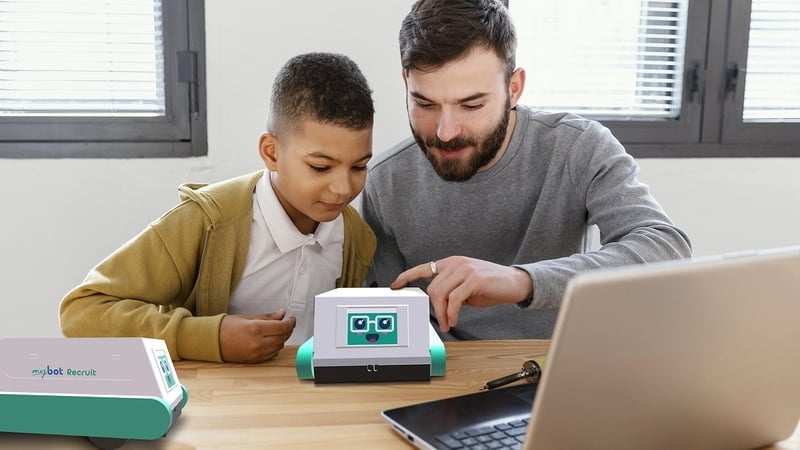The integration of robotics in education has opened up new opportunities for both educators and students, offering a wide range of benefits and possibilities. Let’s explore seven key benefits of using robotics in the classroom:
1. Practical STEM learning
Robotics provides a hands-on approach to teaching science, technology, engineering, and mathematics (STEM) concepts. By participating in robotics projects, students can apply theoretical knowledge to real-world challenges, fostering a deeper understanding of these disciplines.
2. Encourages critical thinking and problem solving skills
Robotics cultivate essential skills like critical thinking and problem solving. Students are challenged as they build and program robots, encouraging them to analyze problems, come up with creative solutions, test hypotheses, and adapt based on feedback.
3. Boost collaboration and communication skills
Robotics projects often require teamwork, which promotes collaboration and communication among students. Working together on complex tasks helps them develop skills such as delegating responsibilities, sharing ideas, listening to diverse perspectives, and communicating their thoughts effectively.
4. Encourages imagination and ingenuity
Robotics unleashes students’ creativity by encouraging them to think outside the box. By designing and customizing robots, students can express their unique ideas, explore innovative solutions, and encourage artistic thinking. Finding new ways to program a robot to complete the same task allows students to see that the world of science doesn’t always have a “one size fits all” approach.
5. Nurture future innovators
In an increasingly technology-driven world, robotics education equips students with essential skills for the future. Engaging in robotics allows them to gain hands-on experience with coding, programming, and automation—skills highly valued in fields such as engineering, computer science, and robotics itself.
6. Power personalized learning
Robotics can be tailored to students’ individual learning styles and abilities. They can work at their own pace, explore areas of interest, and solve problems that resonate with them, promoting a personalized and self-directed learning experience.
7. Allows professional preparation
Robotics education prepares students for the careers of tomorrow. It acquaints them with cutting-edge technologies, instills an entrepreneurial mindset, and fosters a passion for innovation—all of which are crucial to success in the 21st century job market.
Educators have a crucial role in harnessing the potential of robotics in education. By providing access to robotics kits, software, and relevant training, teachers can create an environment that sparks curiosity, fosters innovation, and empowers students to become lifelong learners. He MyBot Recruit by Mimio is an integrated robotics education system with a fully assembled robot so students can start programming and problem solving right away. MyBot Recruit also comes with ready-to-use, standards-based lesson materials so educators can maximize time for hands-on exploration of robotics. To learn more about the new MyBot Recruit, click here: MimioSTEM Robotics.

Robotics in education offers many benefits, including STEM learning, critical thinking, collaboration, creativity, future-ready skills, personalized learning, and career readiness. By embracing robotics, educators can unlock the transformative power of interactive, hands-on learning experiences, preparing students to thrive in an ever-evolving world and paving the way for a future generation of innovators and problem solvers.
To explore award-winning STEM educational solutions, click here or go to www.boxlight.es.
(function(d, s, id) {
var js, fjs = d.getElementsByTagName(s)[0];
if (d.getElementById(id)) return;
js = d.createElement(s); js.id = id;
js.src = “//connect.facebook.net/en_US/all.js#xfbml=1&status=0”;
fjs.parentNode.insertBefore(js, fjs);
}(document, ‘script’, ‘facebook-jssdk’));






